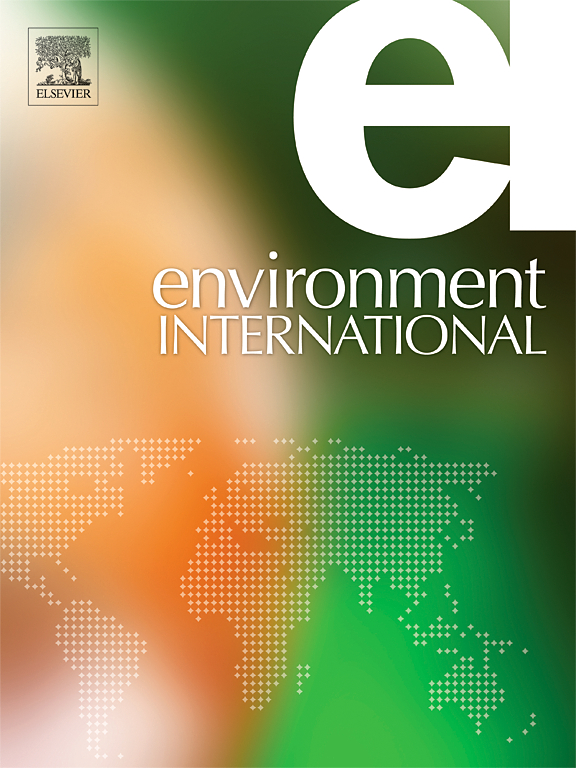Global, regional and national cardiovascular mortality costs associated with non-optimal temperatures over two decades (2000–2021)
IF 10.3
1区 环境科学与生态学
Q1 ENVIRONMENTAL SCIENCES
引用次数: 0
Abstract
Background and Aims
We designed this study to investigate the mortality costs of cardiovascular disease (CVD) deaths associated with non-optimal, cold and hot temperatures—as an emerging environmental risk factor for CVD—globally, regionally, and nationally between 2000 and 2021.
Methods
We obtained disease burden estimates from the Global Burden of Disease (GBD) 2021 study and estimated the cost of CVD deaths linked to non-optimal, cold and hot temperatures using two valuation measures: the age-adjusted and age-invariant value of a statistical life (VSL). To identify key drivers of mortality costs, we performed multiple linear regression (MLR) analysis, examining the effects of climate, socio-economic, and demographic factors.
Results
The global mortality costs due to CVD increased by 51 %, rising from US$550.8 billion to US$833.2 billion using the age-adjusted VSL between 2000 and 2021. Cold temperatures accounted for the majority of the global mortality costs linked to non-optimal temperatures, between US$519.6 and US$745.5 billion over the study period. High-income GBD super-region demonstrated the greatest mortality costs, contributing 36–63 % of global mortality cost of CVD due to non-optimal temperatures over the study period. Among the top 5 countries (the USA, China, Russia, Japan, and Germany) with the greatest mortality cost of CVD deaths attributable to non-optimal temperatures, China experienced the most significant increase in mortality costs, rising by over 700 % during the study period and reaching nearly US$230 billion in 2021. Based on MLR findings, the primary factors influencing mortality costs were the age-standardized CVD death rate, gross domestic product (GDP) per capita, and population age structure.
Conclusions
Our results underscore the importance of the growing global mortality costs from CVD associated with non-optimal temperatures. The findings should serve to alert the global community regarding the urgent need to develop policies that aim to protect the public, particularly in regions with the highest costs and aging populations.


二十年(2000-2021年)与非最佳温度相关的全球、区域和国家心血管死亡率
背景和目的本研究旨在调查2000年至2021年间全球、地区和全国范围内与非最佳、寒冷和炎热温度相关的心血管疾病(CVD)死亡的死亡成本,这是一种新兴的CVD环境风险因素。方法:我们从全球疾病负担(GBD) 2021研究中获得疾病负担估计值,并使用两种评估指标(年龄调整值和年龄不变值)估计与非最佳、冷和热温度相关的CVD死亡成本。为了确定死亡成本的关键驱动因素,我们进行了多元线性回归(MLR)分析,考察了气候、社会经济和人口因素的影响。结果在2000年至2021年期间,使用年龄调整VSL,全球心血管疾病死亡成本增加了51% %,从5508亿美元增加到8332亿美元。在研究期间,与非最佳温度相关的全球死亡成本中,低温占了大部分,在5196亿至7455亿美元之间。高收入GBD超级区域显示出最大的死亡成本,在研究期间,由于非最佳温度导致的CVD全球死亡成本中占36 - 63% %。在非最佳温度导致的心血管疾病死亡成本最高的前5个国家(美国、中国、俄罗斯、日本和德国)中,中国的死亡成本增长最为显著,在研究期间增长了700 %以上,到2021年达到近2300亿美元。根据MLR研究结果,影响死亡成本的主要因素是年龄标准化心血管疾病死亡率、人均国内生产总值(GDP)和人口年龄结构。结论我们的研究结果强调了非最佳温度导致的心血管疾病全球死亡率上升的重要性。研究结果应提醒国际社会,迫切需要制定旨在保护公众的政策,特别是在成本最高和人口老龄化的地区。
本文章由计算机程序翻译,如有差异,请以英文原文为准。
求助全文
约1分钟内获得全文
求助全文
来源期刊

Environment International
环境科学-环境科学
CiteScore
21.90
自引率
3.40%
发文量
734
审稿时长
2.8 months
期刊介绍:
Environmental Health publishes manuscripts focusing on critical aspects of environmental and occupational medicine, including studies in toxicology and epidemiology, to illuminate the human health implications of exposure to environmental hazards. The journal adopts an open-access model and practices open peer review.
It caters to scientists and practitioners across all environmental science domains, directly or indirectly impacting human health and well-being. With a commitment to enhancing the prevention of environmentally-related health risks, Environmental Health serves as a public health journal for the community and scientists engaged in matters of public health significance concerning the environment.
 求助内容:
求助内容: 应助结果提醒方式:
应助结果提醒方式:


